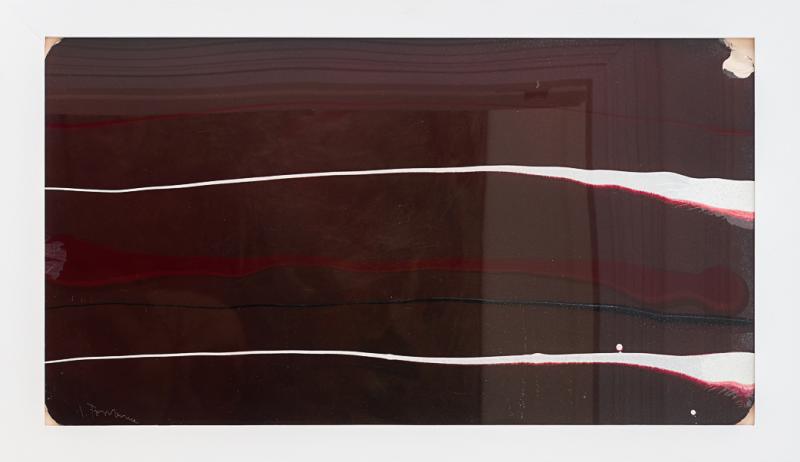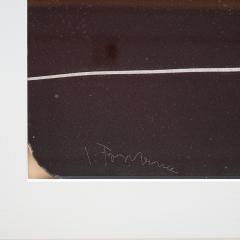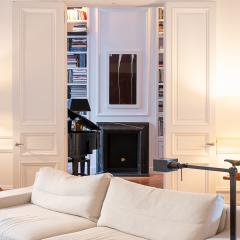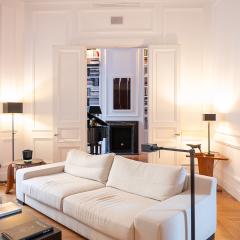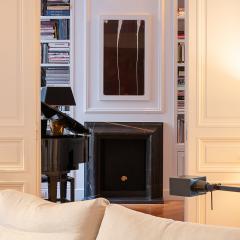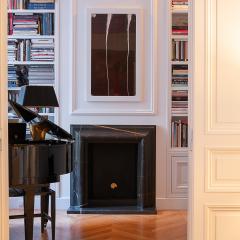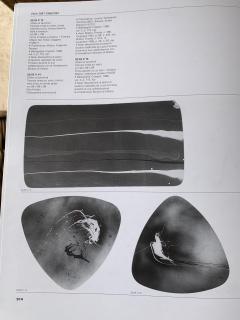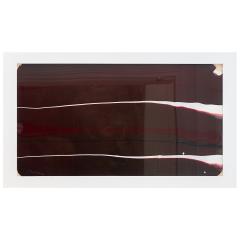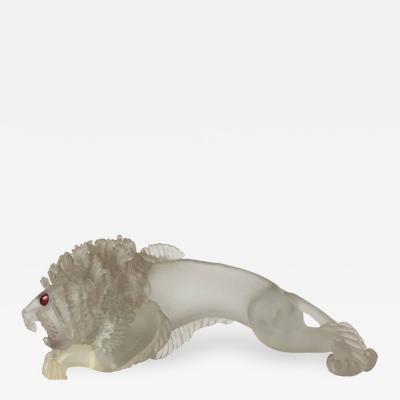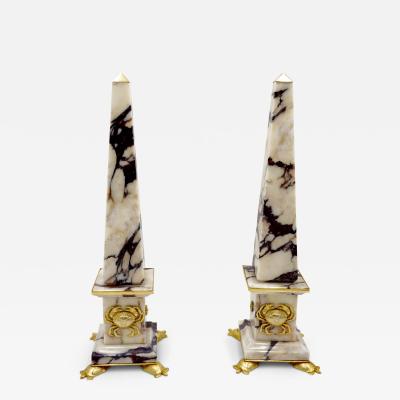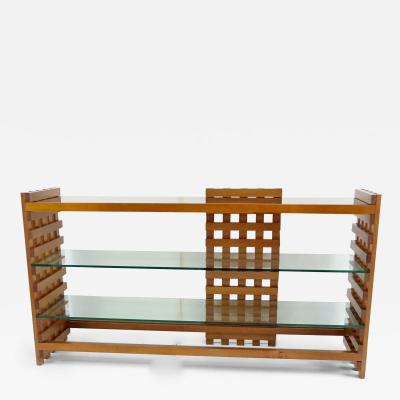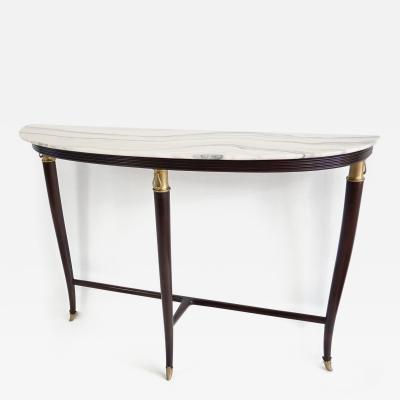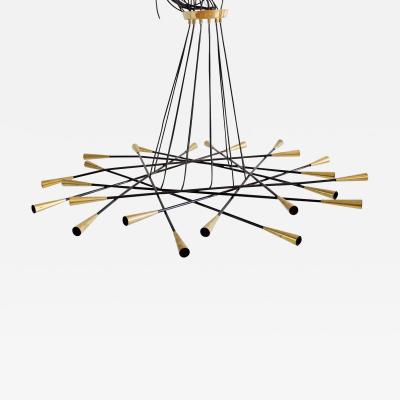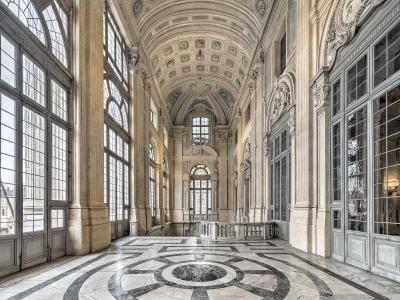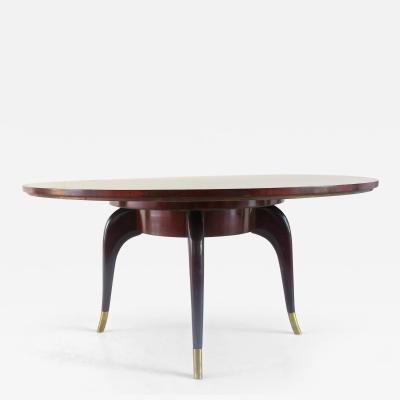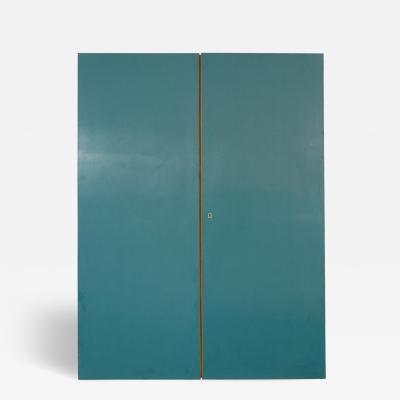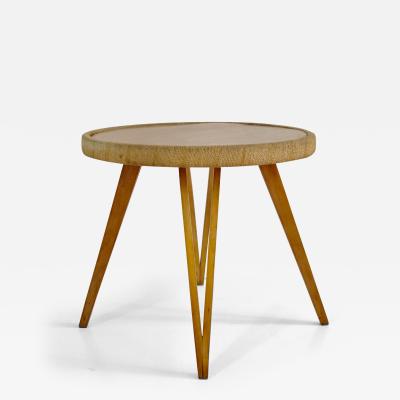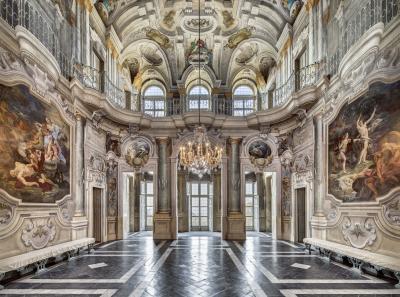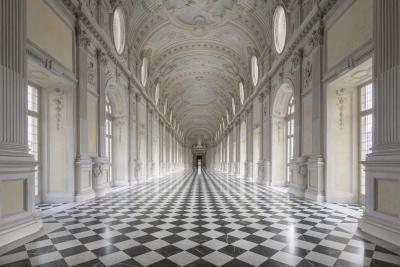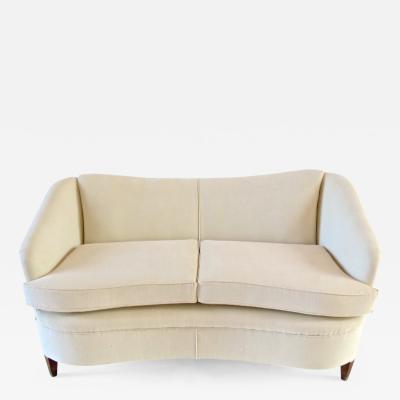Lucio Fontana "Concetto Spaziale" black, red and white oil on glass, signed 1956
-
Description
Lucio Fontana.
Concetto Spaziale 1956
Oil and mixed media on glass.
withe, black and and red stripes on colored glass
Measures: 58 X 108 cm (72 cm x 122 with frame).
signed L. Fontana
price on request
Sold with certification by Archivo Fontana, archived by Archivio Fontana n. 1586/1.
Executed by Lucio Fontana during his cooperation with Arredamenti Borsani Milano. top of a lower table; from beginning of 1970 mounted as a painting
a little break on the top right corner; Never repaired because it has always been cataloged that way
Provenience: directly from Fulgenzio Borsani collection
An extremely rare glass in red.
In this painting Lucio Fontana was surely affected by the action painting of Jakson Pollock. He saw in Paris in march 1952 in Facchetti gallery the first European exhibition of the dripping artworks of Pollock. (Pollock painting abscondita Ed.Milano 2009 pg 151).
Exhibition:
-Camere d'artista Italian design, 1930-1960; Villa Bertelli Forte dei Marmi Lu 24 july, 14 sept 2014.
Literature:
Enrico Crispolti “Lucio Fontana” Catalogo ragionato- Skira Ed. Milano 2006 ,Tomo II pg. 914 fig 52-53V13.
-Enrico Crispolti, 1986 vol. 2 pag 715
- I. de Guttry, M.P. Maino, Il Mobile Italiano degli Anni ‘40 e ‘50, p. 113, figura 116 (modelli simili), Laterza, 1992;
G. Gramigna e F. Irace, Osvaldo Borsani, pp. 198-99, 235-36, de Luca Editore, 1992;
E. Crispolti, Lucio Fontana: -Catalogo ragionato di sculture, dipinti, ambientazioni, vol. II, pp. 911-12, 914, 916-17, 921 (modelli simili), Skira, 2006.
The present work painted by the artist Lucio Fontana on a side table designed by the architect Osvaldo Borsani , with whom he developed a close collaboration and friendship. It appears simultaneously as being impermanent and permanent, reflecting a shared desire to address conventional relationships between the object and its surrounding space.
"The work belongs to a series of furniture designed by Borsani and embellished by Fontana, always enlivening an exceptionally simple design with a dynamic effect in order to create interiors that were both functional and artistic. Borsani and Fontana shared an enduring interest in the new and a proclivity for experimentation in both their individual and collaborative work. Having embraced new ideological and technological advances, over the course of his career, which spanned most of the twentieth century, Borsani played an instrumental role in the formation of Italian modernist design, whilst remaining dedicated to the country’s tradition of craftsmanship and quality of materials. This enduring commitment paired with his pursuit and understanding of design as addressing more than the functional underscored Borsani’s collaborative approach to his work. Fontana’s own spatial research and exploration of dimensionality provided an intersection for artistic exchange between the architect and artist, which expanded the expressive possibilities of both their practices.
Borsani had first met Fontana whilst studying at the Accademia di Brera in Milan, along with artists such as Arnaldo Pomodoro and Fausto Melotti, the next generation of Italy’s avant-garde, with whom the architect would collaborate with throughout his career. Borsani received his early training under his father Gaetano Borsani, whose workshop in Varedo produced Italian Deco style furniture and was highly regarded for its craftsmanship - an influence that would remain central to Borsani’s own production. During the 1930s, Gaetano had begun working with contemporary artists to create furniture with unique decoration, offering his clients additional possibilities for the customisation of their commissions. Sharing his father’s interest in art and recognising the creative and experimental potential of this collaborative approach, Borsani developed close relationships with many contemporary artists, establishing a dialogue within his practice that extended beyond the bounds of architecture and design. This interdisciplinary approach to design flourished in the context of post-war Italy and the resulting economic upturn, which created a momentum and openness for an exchange of ideas and research across cultural fields.
Whilst Borsani and Fontana’s early collaborative work, comprising highly expressive and cohesive interior schemes, illustrates the latter’s interest in the Baroque, their designs later became more abstracted, revealing Fontana’s research into Spatialism. Fontana published his first manifesto on Spatialism in 1947 - the same year he settled permanently in Milan - in which he called for a synthesis in art of colour, sound, movement and time. In his Technical Manifesto given at the 1st International Congress of Proportion at the IXth Trienniale, Milan, 1947, the artist advocated for the need for a new form of art that moved beyond the representation of known forms and repetitive narratives, in order to reflect the ever-changing contemporary conditions of civilisation, namely, scientific discoveries made possible through technical advances, such as ‘the conquest of matter and space’ and the resulting ‘substantial transformation in the way of thinking’. Following in the text, Fontana explained, ‘a form of art is now demanded which is based on the necessity of this new vision. The baroque has guided us in this direction, in all its as yet unsurpassed grandeur, where the plastic form is inseparable from the notion of time, the images appear to abandon the plane and continue into space the movements they suggest’. In reference to the origins of the universe, Fontana stated that ‘movement is an essential condition of matter’ and thus ‘existence, nature, matter are one perfect unity and they develop in time and space’. (Lucio Fontana ‘Technical Manifesto given at the 1st International Congress of Proportion at the IXth Triennale, Milan, 1947', Translated by Charles Damiano, Ark, Winter 1959, pp. 5-6). With Spatialism, Fontana sought to embrace science and technology through the adoption of new media, including neon lighting and television, and examine the relationship between the art object and the surrounding ‘real’ space.
By 1949, Fontana had begun using the term Concetto Spaziale (Spatial Concepts) to describe his work which he considered neither painting or sculpture. Beginning the same year, in a series entitled I Buchi (Holes), Fontana created constellations of holes made in the surface of his canvases that were intended not only as graphic representation but as ‘true openings leading to further space’. In 1952, Fontana introduced fragments of coloured glass to the perforated surface of his oil painted canvases featuring spiralling compositions of holes, producing the series Le Pietre (Stones), which further suggested a spatial dimension in his work. During this period, Fontana also created ‘spatial environments’, presenting his iconic Spatial Light – Structure in Neon for the 9th Milan Triennial in 1951. Through this work, which comprised a rhythmic and intersecting 100-metre-long loop of neon tubing suspended across the ceiling of the grand staircase Palazzo dell’Arte, Fontana sought a convergence of movement and colour with the surrounding architectural space.
"The present painting on glass designed in 1956, is an early and fine example of the final method in which Borsani and Fontana collaborated. In these works, comprising designs for storage furniture and a series of sides tables, Fontana experimented with pouring paint onto glass sheets to create indefinite compositions, which were set into external structures designed by Borsani. The glass surfaces created by Fontana convey a sense of infinity, evoking the cosmos, which recall his spatial concept works and relate to his research during this period in which he created environments with a ‘strong spatial sense’. The atmospheric quality and irregular application of paint across the glass creates an impression of organic movement, drawing the viewer’s gaze across the opalescent surface, which would have countered the sense of verticalness that often characterised Borsani’s interiors. Through its design and use, the item seemed to exist in both illusionary and actual time and space, involving the participation of the viewer, and thus realising the desire to bring art into one’s everyday environment.
Borsani also worked with Fontana using this mode to produce painted panels for furniture models that subsequently become part of Tecno’s production, the design and manufacturing firm the architect founded with his brother Fulgenzio in 1953. Reflecting the entrepreneurial spirit and artisanal experience of its founders, and the optimism and collaborative approach of post-war Milan, Tecno combined rigor of form and quality of craftsmanship to embrace new markets, which inspired further innovation and versatility in Borsani’s designs. Thus, the present wardrobe anticipated the unity of artisan knowledge and research-based, technological approach Borsani successfully established through Tecno. In his work the architect achieved a natural beauty through the man-made, exploring the tensions of traditional and technological production methods, and their conceptual and expressive possibilities. Integral to Borsani’s work was his ability to bridge such ideas by establishing connections, evidenced by his dynamic exchange with Fontana, and their exploration of the continuity of material and space in their work".
from Phillips Auction, description of a wardrobe sold at £275.000 in Important Design, London march, 21, 2019.
This item was published on AD (Architectural Digest) march 2010, Italian Edition n. 346. -
More Information
Documentation: Certificate of Authenticity Notes: certificate by Archivio Fontana Origin: Italy Period: 1950-1979 Materials: glass, oil Condition: Good. a little break on the top right corner; Never repaired because it has always been cataloged that way Creation Date: 1956 Styles / Movements: Color Field, Contemporary Book References: Enrico Crispolti “Lucio Fontana” Catalogo ragionato- Skira Ed. Milano 2006 ,Tomo II pg. 914 fig 52-53V13. Catalog References: -Enrico Crispolti, 1986 vol. 2 pag 715 - I. de Guttry, M.P. Maino, Il Mobile Italiano degli Anni ‘40 e ‘50, p. 113, figura 116 (modelli simili), Laterza, 1992; G. Gramigna e F. Irace, Osvaldo Borsani, pp. 198-99, 235-36, de Luca Editore, 1992; E. Article References: This item was published on AD (Architectural Digest) march 2010, Italian Edition n. 346. Incollect Reference #: 680850 -
Dimensions
W. 42.52 in; H. 22.83 in; D. 0.79 in; W. 108 cm; H. 58 cm; D. 2 cm;
Message from Seller:
Lorenzo Ciompi is a private collector with a wide experience in Italian design achieved starting from the beginning of the 90's. His collection includes famous items designed by Gio Ponti as well as other well-known Italian designers such as Ico Pairisi, Osvaldo Borsani, Carlo De Carli , Carlo Mollino, Melchiorre Bega, Joe Colombo. A lot of furniture items projected by these designers were published on important magazines such as AD, The World Interiors, Elle, Domus.















